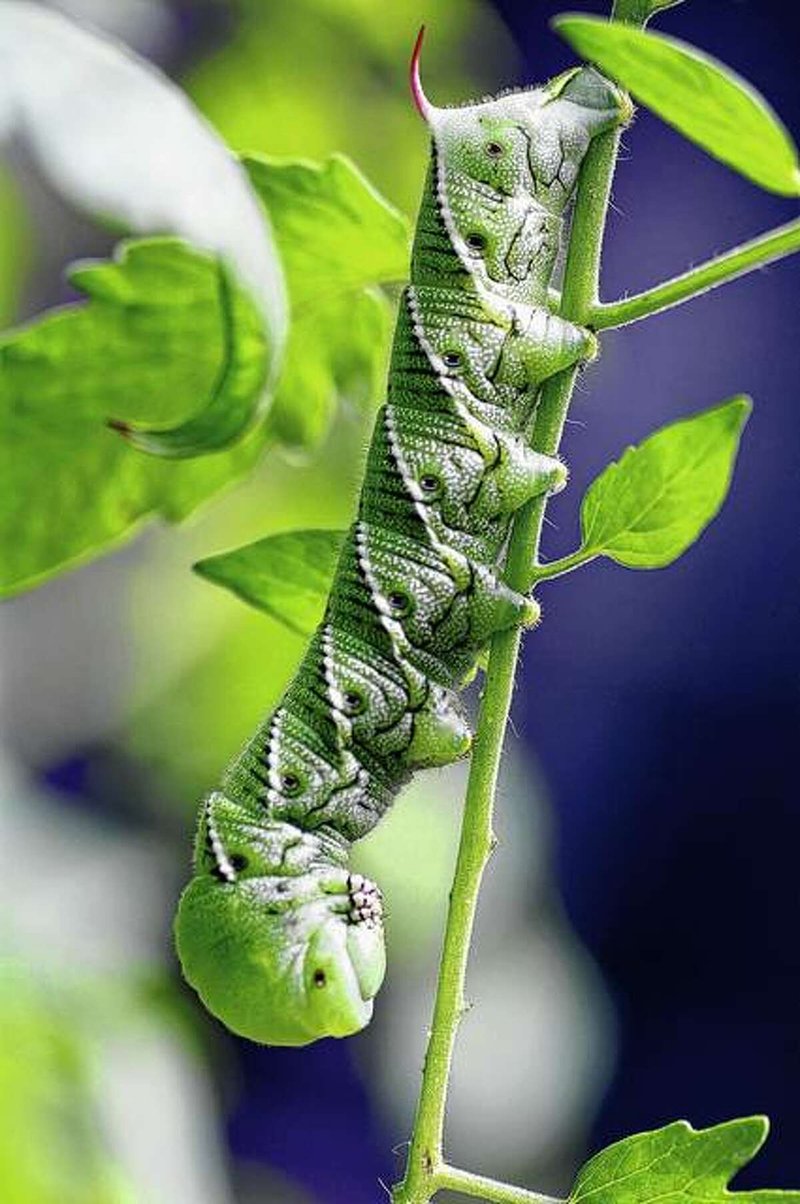
Hornworms, particularly the well-known **tobacco hornworm** and **tomato hornworm**, are the larval stage of certain moths. They can do some serious damage to plants, especially tomatoes and peppers, but they also play an important role in the ecosystem. So, let’s dive in and unpack all you need to know about these intriguing garden visitors.
What Are Hornworms and Their Types?
Hornworms are the larvae of moths belonging to the family Sphingidae. You might be surprised to learn that the adult forms, known as hawk moths or sphinx moths, are pretty remarkable themselves, with their ability to hover in mid-air like hummingbirds. There are a couple of common types you’re likely to encounter in your garden: the **tobacco hornworm (Manduca sexta)** and the **tomato hornworm (Manduca quinquemaculata)**.
The tobacco hornworm is typically a bright green with diagonal stripes, whereas the tomato hornworm has a more distinct appearance with white markings. Both types can grow to about three to four inches long, which is a substantial size when you consider how much they can eat! When you spot one, it’s usually consuming foliage, making it clear why they can cause a lot of trouble for your plants.
Why Do Hornworms Matter to Gardeners?
You might be wondering, “Why should I care about hornworms?” Well, here’s the thing: while they can be destructive, they also indicate something important happening in your garden. Hornworms thrive in environments where their host plants—like tomatoes, peppers, and eggplants—are abundant. Seeing them might mean your garden is flourishing, but it also signifies that you need to keep an eye on your plants.
Their feeding habits can lead to severe damage if left unchecked. A single hornworm can consume a staggering amount of foliage in just a few days. So, if you see one, it’s a good idea to check for others because they tend to travel in groups.
Signs of Hornworm Infestation
Identifying a hornworm can be pretty straightforward if you know what to look for. First, check for **damage to your plants**. Hornworms tend to munch on the leaves of tomato plants and other favorites, leaving behind large gaps. If you notice your plants looking a bit shabby, take a closer look for these hefty caterpillars.
Additionally, **hornworm droppings** are another tell-tale sign—think of them as little green pellets scattered beneath the plants they’ve been snacking on. You might also find the **cocoon cases** left behind when they pupate, which look like brown or green lumps attached to stems or leaves.
How to Control Hornworms in Your Garden
If you discover hornworms in your garden, take a deep breath. Control is possible! First, consider using manual removal. Just wearing gloves, you can pluck those pesky worms off your plants and drop them into a bucket of soapy water to ensure they don’t return. It’s a bit of a gross job, but keeping your plants healthy is worth it!
Another effective method is introducing **natural predators** like parasitic wasps that lay their eggs on the hornworms. When the wasp larvae hatch, they’ll take care of the hornworms for you. You could also consider planting **companion plants** that deter hornworms, such as basil or marigold, which not only improve your garden’s health but also add a punch of color and flavor.
Natural Remedies for Hornworm Control
For those who prefer a more gentle approach, there are several natural remedies you can use. One popular method is creating a **pepper spray**. Mixing a few tablespoons of hot pepper with water can create an effective deterrent. Just be sure to test it on a small area first—plants can be sensitive, too!
Another option is using **Diatomaceous Earth (DE)**, a natural powder that can help deter pests. Sprinkle DE around the base of your plants; when the hornworms crawl over it, it will damage their exoskeleton, leading to their demise. Just remember to reapply after it rains!
Interesting Facts About Hornworms
Hornworms are more than just garden pests—they have some pretty fascinating traits. For example, did you know they can change color? Depending on their environment or state of maturity, they can appear lighter or darker, which helps them blend in to avoid predators. It’s like they have built-in camouflage!
Also, the transformation from caterpillar to moth is astonishing. In just a couple of weeks, hornworms enter a pupation state and emerge as beautiful moths, contributing to the ecosystem as pollinators. So, while they can be a bother in your garden, they play a key role in nature.
When to Seek Professional Help
Sometimes, despite our best efforts, hornworms can overwhelm our gardens. If you find yourself battling a massive infestation and home remedies just aren’t cutting it, it might be time to call in a professional. Pest control experts have access to more robust treatments and can suggest integrated pest management strategies tailored to your garden.
Remember, every garden is different, and what works for one may not work for another. Seeking advice can ensure your precious plants are protected while considering the overall ecosystem.
In conclusion, hornworms can be troublesome, but with a bit of knowledge and action, you can manage their impact on your garden. Whether it’s through manual removal, natural remedies, or understanding their life cycle, being informed is your best defense against these intriguing little creatures. So, next time you encounter hornworms in your garden, you’ll know just what to do!

